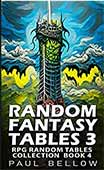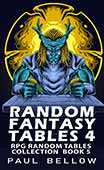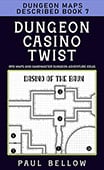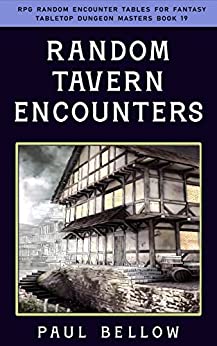In Dungeons & Dragons, the distinction between martial and magical prowess is becoming increasingly blurred. Clerics, once pigeonholed into the role of healers or support, now have the potential to rival—or even out-damage—fighters with the right build choices. The options available in 2025 provide clerics with a toolkit of versatility, from diverse spell lists to powerful divine domains. These advancements allow players to explore synergies between cantrips, weapon-combat features, and spontaneous divine interventions, all combining to deliver impressive damage output. By balancing mechanics, roleplay, and optimization, this guide aims to empower cleric players, giving them the confidence to bridge the gap between the divine and the deadly.
At the heart of a damage-dealing cleric lies their ability to wield divine power artfully. The strategic selection of divine domains, spell versatility, and combat capabilities are key elements that amplify a cleric’s potential. Choosing the right options can transform a character from a supportive figure into an offensive powerhouse. This matters not only for the dynamic of your gaming table but also for fulfilling player desires to master different aspects of gameplay. Understanding how to harness divine strength allows cleric players to shine in combat scenarios, where their unique powers can turn the tide in their favor.
By diving into this guide, you’ll uncover how clerics can effectively deal damage, rivaling the traditional martial classes. With smart build choices and the latest 2025 updates, clerics can step beyond their customary roles. The guide promises to present detailed options for crafting a cleric who can confidently stand toe-to-toe with fighters in terms of damage output. Mastering this balance will make you a formidable force, capable of supporting your team while delivering significant damage in every encounter. Be sure to check out our cleric backstory generator too!
- Choosing the Right Divine Domain
- Ability Score Priority and Feats
- Cantrip and Spell Selection Strategy
- Melee vs. Ranged Weapon Options
- Multiclassing and Synergy Builds
- Gear, Magic Items, and Consumables
- Action Economy and Combat Tactics
- Timing Your Smite‑Style Spells
- Sample Damage‑Focused Cleric Build
- Sample Damage-Infused Combat Scenarios
- Common Mistakes and How to Avoid Them
- Common Mistakes and How to Avoid Them
- The Future of Cleric Damage Meta in D&D 2025
Choosing the Right Divine Domain
In 2025, the choice of divine domain defines much of a cleric’s combat style. Certain domains stand out for their damage-dealing capabilities, including Light, War, Tempest, as well as any new subdomains introduced in the latest Unearthed Arcana. The Light Domain, with its Radiance of the Dawn feature, lets clerics channel divine energy in an explosive manner. The War Domain grants martial prowess by bestowing blessings that enhance weapon attacks, while Tempest focuses on thunderous retribution with features like Wrath of the Storm, making any attack against the cleric a risky venture.
Each domain offers unique features, such as bonus spells and combat-enhancing cantrips, which when combined with martial abilities, can significantly increase damage output. For example, domains might grant access to powerful cantrips like Sacred Flame or the newly released Divine Bolt, both of which scale well with the cleric’s level and ability scores. The strength of these domains lies in their ability to meld effective spellcasting with improved melee or ranged attacks, creating a combat-capable hybrid cleric.
Let’s explore further with a list of domain options, each highlighting key damage features:
- Light: Radiance of the Dawn, searing light spells
- War: Extra Attack, Guided Strike
- Tempest: Wrath of the Storm, Destructive Wrath
- Forge: Blessing of the Forge, heat metal spells
- New Subdomain A: Thunderous Rebuke, AOE lightning spells
- New Subdomain B: Radiant Shield, blinding strike spells
- Trickery: Enhanced duplicity, surprise attack spells
- Death: Touch of death, necrotic damage spells
- Nature: Dampen elements, spike growth spells
- Knowledge: Mind-blasting spells, knowledge-based buffs
- Life: Empowered healing spells, radiant bursts
- Arcana: Magic missile enhancement, arcane blasts
Choosing a domain that matches your playstyle is crucial. For players seeking burst damage, consider domains with features that allow for explosive single-turn offenses. Those interested in sustained output might prefer domains with consistent damage options. Meanwhile, players leaning toward control in the battlefield may find domains that blend utility and damage more suitable. By aligning domain choice with personal strategy, one can craft a cleric build that not only deals significant damage but also enhances overall gameplay enjoyment.
Try my AI Tabletop RPG generators...and an extensive library of content!
Ability Score Priority and Feats
When constructing a cleric primed for combat, prioritizing the right ability scores is essential. Wisdom remains the primary focus for spellcasting, influencing both attack effectiveness and save DC. Following Wisdom, clerics should consider Strength or Dexterity, depending on whether they favor a melee or ranged combat style. Constitution is crucial for durability, ensuring the cleric remains in the fight longer. The point-buy system and Tasha’s guidance provide flexibility in allocating these scores, allowing a tailored build approach in 2025.
Feats can dramatically enhance a cleric’s combat capacity. War Caster is invaluable, especially for those wielding shields or engaging in frequent spellcasting. Resilient (Constitution) enhances concentration checks, preserving spells in the heat of battle. For clerics favoring bludgeoning weapons, Crusher offers intriguing options, while Elemental Adept can streamline radiant or thunder damage spells. Newly released feats like “Divine Striker” or “Radiant Edge” provide further avenues to amplify damage output.
Consider these feat recommendations for boosting cleric damage:
- War Caster
- Resilient (Constitution)
- Crusher
- Elemental Adept (Radiant)
- Divine Striker (2025)
- Radiant Edge (2025)
- Great Weapon Master
- Crossbow Expert
- Mobile
- Polearm Master
Crafting a high-damage cleric requires careful planning of the synergy between ability scores, feats, and domain features. Investing wisely in these areas can provide a strong foundation for your character’s combat prowess. By aligning these elements with your strategic objectives, you’ll optimize your cleric for both survival and devastating attacks, allowing them to hold their own in the party as an effective damage dealer.

Cantrip and Spell Selection Strategy
Selecting the right cantrips and spells is pivotal for maximizing damage as a cleric. Cantrips like Sacred Flame, with its radiant damage, or Toll the Dead, which scales well with enemy HP loss, offer reliable damage options without expending spell slots. Including a domain-specific attack cantrip further enriches your arsenal. Keep an eye out for post-2023 introductions like the Divine Bolt, which provides fresh possibilities for enhancing damage per round (DPR).
⚔️ Fantasy RPG Random Tables Books
Make life as a Gamemaster easier…
If you play Dungeons & Dragons, Pathfinder, or other fantasy RPGs, this
RPG random tables series
is packed with encounters, NPCs, treasure, and more. Available in eBook or print—either way, you’ll have a wealth of adventure ideas at your fingertips.
Balancing your spell choices between cantrips and leveled spells allows you to handle varied combat scenarios. Leveled spells should blend crowd control, buffs, and high-damage options to remain adaptable. In the realm of higher-level spells, focus on those that increase DPR through utility and effectiveness. The inclusion of formidable spells such as Tempest Wave from 2025 ensures that your cleric remains a significant threat against all forms of opposition.
Here’s a selection of recommended cantrips and spells for a damage-focused cleric:
- Sacred Flame
- Toll the Dead
- Word of Radiance
- Divine Bolt (2025)
- Tempest Wave (2025)
- Guiding Bolt
- Spirit Guardians
- Flame Strike
- Destructive Wave
- Inflict Wounds
The key to consistent damage lies in understanding how these spells scale and utilizing resources wisely across encounters. Employing a mix of low- and high-level spells allows for flexibility depending on the challenge faced. Crafting a strategy that accommodates multiple combat engagements ensures that your cleric can maintain pressure on foes, excelling in both single-target and area-of-effect scenarios.
Melee vs. Ranged Weapon Options
A crucial decision for clerics focused on damage is whether to emphasize melee or ranged combat. Melee weapons like the warhammer, mace, or flail offer solid options for up-close encounters, particularly when combined with Divine Strike. For those preferring distance, crossbows and javelins extend a cleric’s reach, especially useful when paired with spells like Spiritual Weapon or cantrips that capitalize on ranged capabilities.
Integrating weapon attacks with features such as Potent Spellcasting augments a cleric’s DPR, making every strike count. Whether engaging in two-weapon fighting or opting for a shield and weapon combination, each setup has advantages depending on chosen domains and combat style. Understanding these options allows clerics to optimize for frontline or backline roles, enhancing their effectiveness in the party dynamic.
Explore these weapon configurations and attack patterns:
- Warhammer plus shield
- Crossbow plus Spiritual Weapon
- Javelin with Divine Strike
- Mace and Potent Spellcasting
- Two-weapon fighting with Blessed Strikes
- Shield plus mace for defense balance
- Flail coupled with Wrath of the Storm
- Crossbow Expert for consistent range
- Greatsword with divine enhancements
- Quarterstaff and Divine Strike pair
Choosing the right weapon setup is pivotal, heavily influenced by domain abilities and combat preferences. The marriage of martial and magical prowess in clerics allows for flexibility in combat roles. By experimenting with different configurations, players can discover the setup that not only maximizes damage but also harmonizes with the cleric’s chosen domain features, solidifying them as a formidable presence on the battlefield.
Multiclassing and Synergy Builds
Multiclassing presents clerics with intriguing pathways to augment their damage output. Taking a level in Fighter grants access to Action Surge, facilitating additional attacks per round. A dip into Barbarian could introduce Rage synergy with Divine Strike, amplifying melee damage sustainably. Warlock provides a different flavor, integrating Eldritch Blast combos to enhance ranged combat effectiveness.
The multiclassing landscape in 2025 also introduces new flexible archetypes, enriching options available to players. Understanding the rules for multiclassing and leveraging these archetypes can open doors to unique build combinations. The benefits of branching into another class must be weighed against the loss of higher-level cleric spells, making the decision strategic.
Here’s a table providing multiclass paths and their key features:
| Multiclass Path | Key Features | Expected DPR Increase | Build Caveats |
|---|---|---|---|
| Cleric/Fighter | Action Surge | Moderate | Delayed spell progression |
| Cleric/Barbarian | Rage, Divine Strike | High | Reduced armor choices |
| Cleric/Warlock | Eldritch Blast, Invocations | High | Split focus on abilities |
| Cleric/Sorcerer | Metamagic Options | Moderate | Limited sorcery point economy |
| Cleric/Druid | Wild Shape, Extra Spells | Variable | Overlapping roles |
| Cleric/Paladin | Divine Smite, Auras | High | Stat-heavy, MAD issues |
| Cleric/Rogue | Sneak Attack | Variable | Requires creativity in tactics |
| Cleric/Bard | Bardic Inspiration | Moderate | Requires charisma investment |
Deciding on multiclassing requires a nuanced understanding of the risks and rewards. While additional abilities and synergies can boost damage significantly, the trade-offs may not fit every campaign or playstyle. Sometimes, remaining a pure cleric maintains focus and ensures full access to powerful high-tier spells and features. Careful consideration of your character’s role and long-term potential in the party is essential for making the best choice.

Gear, Magic Items, and Consumables
Equipping a cleric with the right gear is fundamental to optimizing damage. Magic items such as the Sun Blade or Moon Sickle enhance attack potency, while a Staff of Thunder can deliver dramatic bursts of power. Other options, like the Radiant Weapon, utilize enhanced properties to increase your cleric’s effective combat range. Additionally, potions that boost casting ability or strength offer temporary, yet impactful, damage enhancements, particularly in crucial encounters.
2025 introduces exciting new items, including the Divine Focus Crystal, which amplifies divine spells. Stormforged Gauntlets channel elemental power, giving clerics a shockingly effective damage boost. The Radiant Infusion Flask, on the other hand, offers new ways to restore or augment spellcasting in extended battles, rounding out a cleric’s resources.
Here are essential items and consumables for boosting damage:
- Sun Blade
- Moon Sickle
- Staff of Thunder
- Radiant Weapon
- Divine Focus Crystal (2025)
- Stormforged Gauntlets (2025)
- Radiant Infusion Flask (2025)
- Potion of Giant Strength
- Potion of Spell Recall
- Amulet of the Devout
- Cloak of Protection
- Periapt of Proof Against Poison
It’s important for players to communicate with their Dungeon Master about acquiring key magic items and to plan resources appropriately. Investing in the right gear not only boosts immediate combat effectiveness but also provides greater resilience over the course of the campaign. With the right items, clerics can fully embrace their damage-dealing potential, standing strong alongside their martial counterparts.
⚔️ Fantasy RPG Random Tables Books
Make life as a Gamemaster easier…
If you play Dungeons & Dragons, Pathfinder, or other fantasy RPGs, this
RPG random tables series
is packed with encounters, NPCs, treasure, and more. Available in eBook or print—either way, you’ll have a wealth of adventure ideas at your fingertips.

Action Economy and Combat Tactics
Mastering action economy is crucial for clerics aiming to maximize damage output. By leveraging bonus actions and reactions with spells like Spiritual Weapon, clerics can maintain consistent pressure on enemies. Adding Divine Strike to weapon hits increases overall effectiveness, while readying actions for spells like Shield of Faith provides crucial protection at key moments. Smart positioning enables the effective use of area-of-effect spells, optimizing each turn’s potential damage.
Incorporating channel divinity into melee attacks is another layer to explore. Combat tactics should adapt to the flow of battle, ensuring that clerics can both support allies and deal significant damage to adversaries. Mastering these elements separates high-performing clerics from their peers, allowing them to outmaneuver and outperform more straightforward attacker classes in varied combat situations.
Consider these tactics to enhance combat efficiency:
- Cast Spiritual Weapon as a bonus action, then attack with a weapon
- Use Divine Strike on successful weapon hit for added damage
- Ready action to cast Shield of Faith
- Position for optimal Sacred Flame AOE use
- Utilize Channel Divinity for extra burst damage
- Combine Blessing of the Forge with melee enhancements
- Leverage Wrath of the Storm for reactive strikes
- Create tactical openings with Guiding Bolt
- Reserve Flame Strike for clustered enemies
- Utilize Radiant Bolt for piercing damage
- Execute tactical retreats with aided retreat spells
- Activate Thunderous Rebuke against melee aggressors
- Rotate spells for maximum utility across turns
- Prioritize enemy casters with Inflict Wounds
The discipline and precision in using action economy wisely enables clerics to maximize their offensive capabilities. By keeping these tactics in mind, clerics can outpace fighters in damage while still supporting parties with their versatile abilities. Constant adaptation and strategic play elevate clerics to new heights, redefining their role within adventuring groups and showing their true potential as formidable combatants.
Timing Your Smite‑Style Spells
Deploying high-impact spells like Flame Strike, Destructive Wave, or Divine Word requires timing and tactical awareness. These spells deliver tremendous burst damage, making them powerful tools in a cleric’s arsenal. Effective spell slot management and planning for buff or debuff layers enhance impacts, while leveraging a spell’s full potential when conditions align optimizes combat contributions, especially in the newly evolved 2025 context.
Burst spells should be saved for crucial fight moments rather than random castings, maximizing their effectiveness. Prioritize significant encounters where these spells can sway battle outcomes, ensuring that you retain enough spell slots for combat longevity. By aligning their deployment with optimal conditions, clerics can amplify their damage output dramatically when it matters most.
Here’s a table listing key spells and their ideal use:
| Spell Name | Ideal Combat Situation | Approx. Damage Potential vs CR |
|---|---|---|
| Flame Strike | Grouped enemies | High against medium CR, multi-target |
| Destructive Wave | Close-quarters meele | High against high CR, AOE |
| Divine Word | Lower enemy HP thresholds | Situationally high at all CRs |
| Fire Storm | Zones of clustered foes | High against moderate CR, wide area |
| Mass Cure Wounds | When healing is secondary | Moderate, but widespread utility |
| Harm | Directly against singular threats | High against high CR, single-target |
Understanding the ebb and flow of battle helps clerics time their high-impact spells effectively. Saving these spells for dramatic moments not only boosts damage but aids in turning the tide during tough encounters. Mastering when to unleash your most powerful spells ensures every cast delivers maximum impact, underscoring the sheer power of divine magic wielded judiciously.

Sample Damage‑Focused Cleric Build
Let’s walk through constructing a level 10 cleric build designed to out-damage a standard fighter over sustained combat. Begin with ability scores that prioritize Wisdom for spellcasting efficiency, followed by either Strength or Dexterity based on preferred combat style, and bolster with Constitution for durability. Choosing the Tempest Domain allows access to high-damage features like Wrath of the Storm and Destructive Wrath.
Try my AI Tabletop RPG generators...and an extensive library of content!
Feats such as War Caster and Elemental Adept (for thunder damage) allow you to exploit these features further. Spells like Spirit Guardians and Empowered Flame Strike contribute heavily to consistent and burst damage. Gear up with items like the Radiant Weapon and the new Stormforged Gauntlets to enhance attack potency. These choices ensure that each action in combat maximizes damage potential.
Combat strategy should leverage your domain features to stack damage. Begin encounters with Spirit Guardians then deploy an optimized casting of Flame Strike or Destructive Wave during key turns. Continuous use of cantrips like Sacred Flame ensures ongoing pressure without draining resources.
In summary, this sample build shows the effective blending of divine spells and combat prowess to deliver high damage. Testing this construct in a session allows players to fine-tune their play style, adapting to party needs while still outpacing traditional fighters. By refining this damage-focused cleric, players step into a role where divine magic and martial efficiency coalesce, offering a dynamic, engaging, and powerful gaming experience.
Sample Damage-Infused Combat Scenarios
Crafting compelling combat scenarios with a damage-focused cleric requires understanding how their unique abilities can shine. Here, we’ll explore a few imaginative situations where clerics can maximize their destructive potential. By strategically aligning their abilities, clerics infuse battles with dynamic shifts, creating memorable encounters for the entire party.
Imagine a skirmish in a dimly lit crypt, surrounded by hordes of undead. This setting allows a Light Domain cleric to employ Radiance of the Dawn, delivering radiant bursts that exploit undead vulnerabilities. Pairing this with Spirit Guardians creates a radiant cyclone of divine energy, decimating foes while protecting allies within its sphere. Proper positioning and tactical retreats ensure the cleric remains a central force throughout the engagement.
Consider similarly treacherous terrain where tempestuous elements come into play. A Tempest Domain cleric unleashes Wrath of the Storm amid a thunderstorm, striking foes with electrifying retribution. When combined with Destructive Wave, the scene erupts into chaos as bolts of lightning and waves of divine energy crash simultaneously, overwhelming adversaries. This coordinated assault, bridging divine power and environmental conditions, creates an awe-inspiring spectacle.
| Scenario | Environment | Domain Benefit | Tactical Outcome |
|---|---|---|---|
| Undead Crypt | Dark, confined | Light | Radiant bursts, mass undead slaying |
| Thunderstorm Plains | Open, stormy | Tempest | Massive AOE damage, weather synergy |
| Forest Ambush | Dense, wooded | Nature | Ambush tactics – thorn traps |
| Infernal Arena | Volcanic, fiery | Forge | Heat metal spells, fire resistance |
| Cavernous Lair | Echoing, rocky | War | Tactical strikes – flanking maneuvers |
| Mystic Ruins | Arcane charged | Arcana | Spell amplification |
| Fey Enclave | Enchanted, whimsical | Trickery | Illusionary diversions, surprise attacks |
| Deserted Battlefield | Wide, barren | Death | Necrotic surges, lifedraining attacks |
| Coastal Tidepools | Watery, tidal | Tempest | Tidal waves, electric traps |
| Mountain Pass | High altitude, windy | Nature | Elemental manipulation, wind bursts |
| Icebound Fortress | Frozen, reflective | Light | Radiant light reflecting off ice |
| Twilight Glade | Dusk-lit, foggy | Trickery | Stealthy evasion, misdirection |
| Glacier Rift | Moving icebergs | Tempest | Ice-shattering strikes, unpredictable |
| Sunlit Orchard | Fertile, overgrown | Life | Healing surges, radiant growth |
| Haunted Manor | Ghostly, eerie | Death | Spectral vision, incorporeal interactions |
| Copper Canyon | Metallic, resonant | Forge | Metal manipulation, amplifying resonance |
| Jungle Ruins | Overgrown, ancient | Nature | Entangle, vine traps |
| Old Library Labyrinth | Mazelike, dusty | Knowledge | Insightful tactics, strategic advantage |
| Oasis Mirage | Illusory, shifting | Trickery | Mirage-based camouflage |
| Floating Isles | Skyborne, drifting | Arcana | Levitation tactics, aerial prowess |
Graphs illustrating these scenarios can help visualize the battle crescendo and energy flow. They depict how cleric abilities escalate in intensity and contribute to battle outcomes. For example, a flow chart might show the sequence of spellcasting and subsequent enemy reactions in a crypt scenario.
The goal in presenting these scenarios is to empower cleric players to utilize their abilities creatively, maximizing not only damage but also their impact on the battlefield. Flexible thinking and strategic planning can transform an average encounter into an innovative, edge-of-your-seat experience.
Common Mistakes and How to Avoid Them
Crafting a damage-optimized cleric requires careful attention to avoid common pitfalls that can undermine your strategy. One such mistake is overextending your spell selection, which can lead to a diluted focus on core damage abilities. It’s crucial for cleric players to streamline their spell choices, ensuring that each one enhances their combat effectiveness. Ignoring action economy is another misstep, as it results in missed opportunities to maximize output each turn. Properly leveraging bonus actions and reactions can enhance a cleric’s ability to sustain pressure on enemies, making every second in combat count.
Underestimating the importance of stat synergy is a frequent error, potentially limiting the full potential of your build. Allocating ability points without a clear strategy for maximizing Wisdom, Strength, or Dex can leave a cleric less effective in both offense and defense. Additionally, failing to integrate feats harmoniously with domain features can lead to underwhelming performance. It’s vital to explore how each element of your build interacts, creating a cohesive and powerful character.
Quick fixes are available to rectify these mistakes effectively. Before battles, resist the urge to spam Cure spells unnecessarily—conserve your spell slots for utilities and control options that can turn the tide during combat. Regularly remind yourself to utilize Channel Divinity, a feature that adds significant bonus damage when used strategically. Align your cantrip choices with your overall damage priorities, ensuring that even your simplest spells contribute meaningfully to combat.
A comprehensive list of common mistakes and their solutions includes:
- Casting Cure spells unnecessarily before combat
- Overlooking additional damage from Channel Divinity
- Choosing low-DPR cantrips
- Failing to optimize bonus actions with spells
- Ignoring feat and domain synergy
- Misplacing high-impact spells in trivial encounters
- Overestimating sustain without sufficient Constitution
- Underutilizing weapon enhancements
- Not positioning for AOE spell effectiveness
- Overcommitting spell slots for buffs instead of damage
After several gaming sessions, reviewing combat logs can provide valuable insights, helping players fine-tune their strategies to maximize damage output. Recalculating damage potential and making adjustments based on practical experience ensure continued improvement. Empowering clerics with an understanding of common errors boosts not only individual performance but also enriches the entire party’s tactical approach.
Recognizing and avoiding these pitfalls transforms a cleric from a mere support role into a formidable force on the battlefield. By refining strategies and prioritizing efficiency, a damage-focused cleric can lead the charge, rivaling more traditional martial classes in overall combat effectiveness. Engaging with fellow players and participating in discussions about optimization can further enhance one’s understanding and execution, contributing to a more dynamic and successful gameplay experience.
Common Mistakes and How to Avoid Them
Creating a high-performing damage cleric involves careful planning and vigilance against common pitfalls. One frequent mistake is over-diversifying spells, which results in a diluted focus on direct damage capabilities. Clerics must also be mindful of action economy—every turn is an opportunity to maximize damage output, and ignoring this can mean significant losses in efficiency. Additionally, failing to align ability scores, feats, and domain choices can hinder your cleric’s overall potential, resulting in missed damage opportunities.
To address these issues, it’s important to adopt quick, strategic fixes. For instance, try to avoid casting Cure spells unnecessarily in combat, as this can waste crucial actions that could be used for offensive spells or support. Instead, focus on utility spells and crowd control that amplify your team’s effectiveness. Using Channel Divinity to its fullest potential can also provide tremendous bonus damage, transforming your attack plans. Aligning your cantrip choices with damage priorities ensures every round contributes to whittling down foes efficiently.
Understanding these common errors allows players to adjust their tactics. Misplacing high-impact spells on trivial encounters, or overestimating sustain without appropriate Constitution investment, can cripple your ability to maintain consistent pressure. Regularly review combat logs post-session to identify areas of improvement. This will help in recalibrating your approach, allowing clerics to deliver optimal damage and support.
⚔️ Fantasy RPG Random Tables Books
Make life as a Gamemaster easier…
If you play Dungeons & Dragons, Pathfinder, or other fantasy RPGs, this
RPG random tables series
is packed with encounters, NPCs, treasure, and more. Available in eBook or print—either way, you’ll have a wealth of adventure ideas at your fingertips.
Here’s a comprehensive table outlining common mistakes and solutions:
| Mistake | Explanation | Solution | Outcome |
|---|---|---|---|
| Casting Cure spells unnecessarily | Wastes actions needed for damage | Prioritize healing outside of combat | Maximizes combat actions |
| Forgetting Channel Divinity | Misses out on bonus damage opportunity | Regularly plan Channel Divinity usage | Increases burst damage |
| Choosing low-DPR cantrips | Reduces overall damage potential | Select high-DPR cantrips like Toll the Dead | Consistent damage output |
| Ignoring bonus action optimizations | Misses additional attack options | Use spells like Spiritual Weapon | Enhances action economy |
| Not aligning feats with domain | Misses out on optimized synergy | Match feats like War Caster to domain | Maximizes potential synergy |
| Misplacing high-impact spells | Suboptimal use of resources | Save powerful spells for tough encounters | Efficient spell slot use |
| Overestimating sustain | Risk of dropping in long battles | Invest in Constitution for durability | Maintains combat readiness |
| Underutilizing weapon enhancements | Misses out on available damage boosts | Leverage magic and enhanced weapons | Increases attack potency |
| Poor AOE positioning | Reduces effectiveness of area spells | Improve positioning in combat | Maximizes area damage |
| Overcommitting spell slots to buffs | Limits offensive options | Balance between buffs and damage spells | Improves overall output |
| Neglecting reaction opportunities | Misses defensive or offensive reactions | Prepare for reactions like Wrath of Storm | Optimizes defensive options |
| Failing to leverage melee and spells | Limits damage versatility | Combine spells with weapon attacks | Expands damage capabilities |
| Overemphasizing one damage type | Risky against resistant enemies | Diversify damage types | Ensures adaptability |
| Weak synergy with party tactics | Reduces party efficiency | Coordinate tactics and spell use | Enhances team strategy |
| Underestimating cantrip value | Overuses spell slots unnecessarily | Use cantrips efficiently in battle | Preserves spell resources |
| Rigid in combat strategy | Limits ability to adapt to battle changes | Flexibly adjust tactics per battle | Boosts responsiveness |
| Forgetting class spell benefits | Loses out on domain-specific advantages | Utilize all available class benefits | Increases effectiveness |
| Choosing redundant spells | Overlaps existing abilities | Select spells that complement core abilities | Enhances versatility |
| Neglecting enemy vulnerabilities | Misses extra damage chances | Identify and exploit weaknesses | Increases damage efficiency |
| Mismanaging long rest resources | Depletes resources before key encounters | Plan resource use for vital combat | Sustainable performance |
By understanding and addressing these common mistakes, clerics can fine-tune their builds to achieve maximum effectiveness. Empowering clerics with the right strategies and solutions ensures both individual success and party-wide benefits, elevating their role within any adventuring group.

The Future of Cleric Damage Meta in D&D 2025
As 2025 unfolds, the cleric’s role in D&D’s evolving meta will continue to intrigue and inspire players. Game designers are actively tweaking divine classes, factoring in balance while introducing fresh dynamics that keep the game thrilling. Exploring upcoming Unearthed Arcana previews offers insight into the potential direction cleric subclasses may take, allowing players to anticipate strategic shifts.
The trend toward bridging the gap between martial and magical continues to gain momentum. With innovations like Smite-style spells and hybrid multiclass options, the chasm narrows further. This encourages active experimentation, as players keen to explore novel builds can engage with ongoing discussions and developer notes to stay informed about optimal practices.
Rules and gameplay evolve, fostering community dialogue and adaptation. Players are encouraged to question, test, and innovate upon existing paradigms. Engaging in forums and sharing experiences enriches collective understanding, pushing cleric potential to new heights.
Ultimately, unlocking a cleric’s hidden DPR lies in harnessing divine creativity and honing strategy. By embracing updates and remaining open to change, cleric players can fully enjoy the expansive possibilities offered by their class. Embrace the power and versatility of divine forces, and be prepared to surprise your foes as a cleric who stands alongside fighters—not only in support but as an equal in raw, unyielding power.










